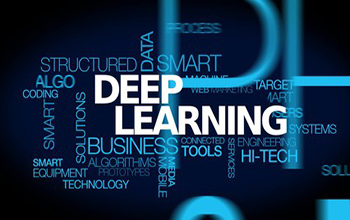
This course Deep Learning provides a hands-on and theoretical introduction to Deep Learning. Students will learn the mathematical foundations, architectures, and real-world applications of deep neural networks. The course also includes projects using frameworks.
Module 1: Introduction to Deep Learning History and evolution of AI and Deep Learning Difference between ML and DL Applications of Deep Learning (Vision, NLP, Healthcare, etc.) Overview of popular DL libraries: TensorFlow, Keras, PyTorch.
Module 2: Mathematics for Deep Learning Linear Algebra essentials vectors, matrices, dot product Calculus basics gradients, partial derivatives Probability and statistics for DL Loss functions and optimization overview.
Module 3: Neural Networks Basics Biological inspiration and perceptron Architecture of a Neural Network Forward and backward propagation Activation functions ReLU, Sigmoid, Tanh, Softmax.
Module 4: Training Deep Neural Networks Cost functions and gradient descent Backpropagation algorithm Overfitting and underfitting Regularization techniques (L1, L2, Dropout) Hyperparameter tuning.
Module 5: Convolutional Neural Networks (CNNs) Introduction to image processing Convolution, pooling, and padding CNN architectures: LeNet, AlexNet, VGG, ResNet Applications in image classification and object detection.
Module 6: Recurrent Neural Networks (RNNs) Sequence modeling and time-series data Architecture of RNNs and vanishing gradient problem LSTM and GRU networks Applications in NLP and forecasting.
Module 7: Advanced Architectures and Techniques Autoencoders and Variational Autoencoders (VAEs) Generative Adversarial Networks (GANs) Transformer models and Self-Attention BERT and GPT overview.
Module 8: Deep Learning Frameworks and Tools Installing and setting up TensorFlow and PyTorch Writing models from scratch Using pre-trained models and transfer learning Introduction to ONNX, Keras Tuner.
Module 9: Real-World Applications & Case Studies Computer Vision (face recognition, OCR) Natural Language Processing (sentiment analysis, translation) Healthcare (disease prediction, diagnostics) Autonomous systems robotics, self-driving cars.
Module 10: Capstone Project and Deployment Selecting and scoping a project Model evaluation and metrics Model optimization and quantization Deploying deep learning models (Flask, FastAPI, Streamlit) Using cloud platforms Google Colab, AWS, Azure.
Mobile: 9100348679
Email: coursedivine@gmail.com

You cannot copy content of this page